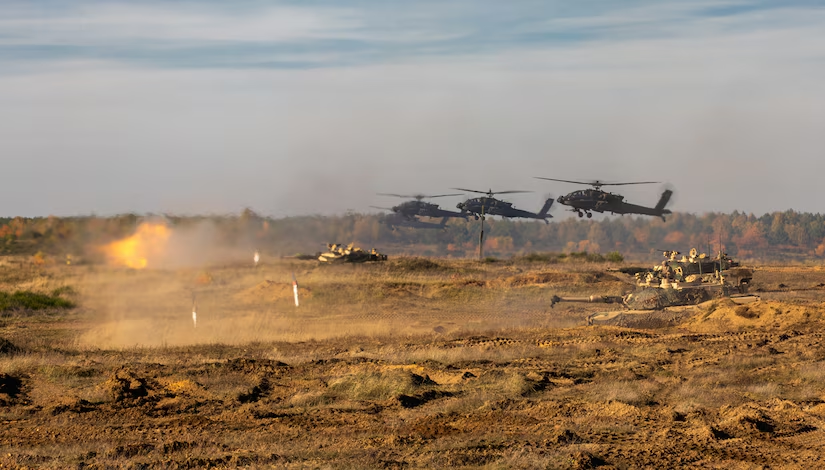
Key Points
- Russia’s assault on Ukraine has spurred a significant arms procurement surge worldwide, with the United States benefiting from increased sales and a strengthening of defense partnerships.
- European nations, now acutely aware of security threats in their vicinity, are heavily investing in U.S. military equipment.
- Co-production models are gaining prominence, signaling a desire for self-sufficient defense industrial capabilities and less reliance on traditional import channels.
The ongoing Russian-Ukrainian conflict has drastically reshaped the global defense landscape. In response to heightened security threats, nations worldwide are bolstering their arsenals, leading to record-breaking military sales for the United States.
James Hursch, director of the Defense Security Cooperation Agency (DSCA), highlighted a “huge increase” in demand from European allies and partners since Russia’s invasion of Ukraine. The United States closed fiscal year 2023 with a record-shattering $80 billion in transactions through its foreign military sales and grant assistance system.
Surge in European Defense Spending
Russia’s invasion of Ukraine has triggered a fundamental reassessment of security risks among European nations. This heightened threat perception has translated into a surge in defense spending, with the U.S. emerging as the primary supplier of advanced military systems and platforms.
The increased demand from NATO allies is also noteworthy. In 2023, the U.S. made a $4 billion year-on-year increase in military purchases. This underscores the alliance’s collective commitment to enhancing deterrence and defense capabilities in a rapidly changing security landscape.
Co-Production: A New Era in Defense Partnerships
The United States is evolving its defense partnerships beyond traditional foreign military sales, exploring co-production models with key allies and partners. Poland’s participation in joint defense manufacturing projects with the U.S. exemplifies this trend, marking a transition towards greater interdependence and shared capabilities development. This collaborative model offers several strategic advantages.
Firstly, co-production disperses manufacturing capacity across multiple nations, reducing reliance on single-source suppliers and mitigating the risk of supply chain disruptions in times of crisis. This is a vulnerability underscored by Russia’s invasion of Ukraine. Secondly, co-production agreements can stimulate the U.S. defense industrial base by creating opportunities for technology transfer, joint investment in research and development, and access to new markets. Thirdly, by facilitating knowledge sharing and technology transfer, co-production helps bolster allied nations’ defense manufacturing sectors, reducing long-term reliance on imports and fostering self-sufficiency that enhances collective security. Finally, joint development and manufacturing can lead to shared costs, economies of scale, and increased affordability of advanced military systems.
Defense Spending Beyond Sales
Importantly, the U.S. also allocates resources for initiatives like the Ukraine Security Assistance Initiative and Building Partner Capacity programs, totaling $14.68 billion in fiscal 2023. Additionally, the Foreign Assistance Act supports various programs focused on counter-narcotics, anti-terrorism, and nonproliferation.
The unprecedented demand for U.S. military technology and services underscores the profound impact of the ongoing war in Ukraine. It’s a testament to the perceived reliability of American defense systems and a clear indication that nations are prioritizing their security like never before.
